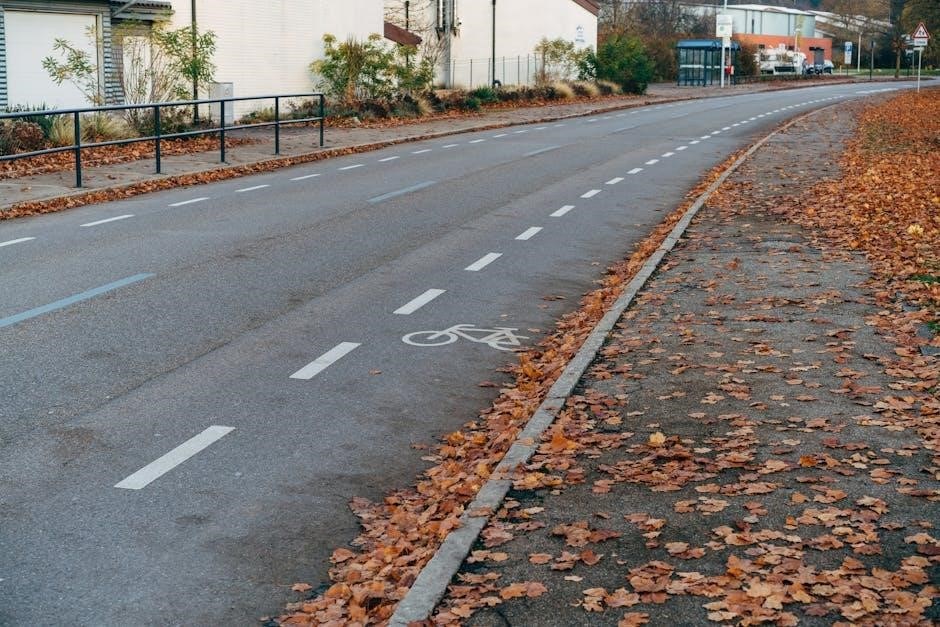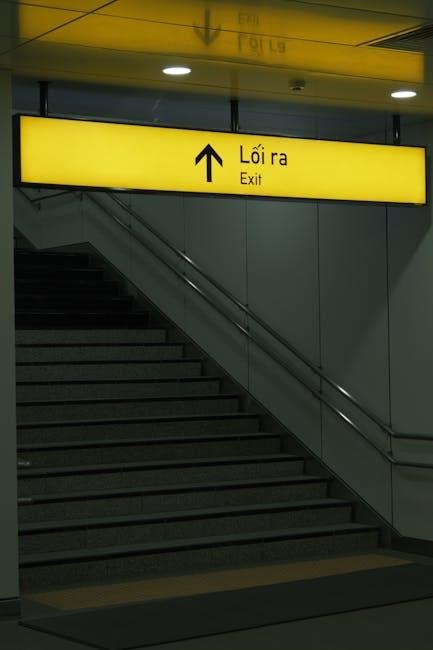
a burglars guide to the city
Understanding the Burglar’s Mindset
Burglary is often a crime of opportunity‚ with offenders weighing risks against potential rewards. Burglars typically prefer easily accessible targets with minimal visibility and proximity to escape routes.
1.1. Motivations Behind Burglary
Burglars are often driven by financial necessity or opportunistic gain. Some are motivated by personal financial crises‚ while others seek thrills or excitement. Urban areas attract burglars due to their density and anonymity‚ making it easier to blend in. Additionally‚ substance abuse can play a role‚ as some offenders steal to fund addictions. The presence of high-value‚ easily resalable items in urban homes also lures burglars. Psychological factors‚ such as a sense of invincibility or disregard for others’ property‚ further fuel their actions. Understanding these motivations helps in developing targeted strategies to deter and prevent burglaries in urban environments.
1.2. Psychological Factors Influencing Decision-Making
Psychological factors significantly influence a burglar’s decision-making process. Many offenders exhibit low self-control‚ prioritizing immediate rewards over long-term consequences. Rational choice theory suggests burglars assess potential targets based on effort‚ risk‚ and reward. Environmental cues‚ such as overgrown gardens or dark alleys‚ signal vulnerability. Additionally‚ moral disengagement allows burglars to justify their actions‚ often viewing victims as impersonal targets. Research indicates that routine activities theory also plays a role‚ as burglars seek opportunities where guardianship is weak. Understanding these psychological dynamics aids in developing strategies to disrupt their decision-making processes and deter criminal behavior in urban settings.

The Art of Target Selection
Burglars often select targets based on visibility‚ ease of access‚ and signs of vulnerability‚ such as overgrown gardens or poorly lit areas‚ signaling opportunity.
2.1. Identifying Vulnerable Properties
Burglars often target properties that appear easy to break into‚ with minimal risk of detection. Signs of neglect‚ such as overgrown gardens or broken fences‚ signal vulnerability. Poor lighting and lack of visible security measures‚ like alarms or cameras‚ make homes more attractive to intruders. Properties with easy access points‚ such as unlocked windows or weak doors‚ are also prime targets. Additionally‚ homes in areas with high residential turnover or less community engagement are more likely to be selected‚ as they may indicate less vigilant neighbors. Burglars prioritize quick entry and exit‚ favoring properties near escape routes like alleys or busy streets‚ making them ideal targets for opportunistic crimes.
2.2. Timing and Opportunity in Burglary
Burglars often strike when opportunities align with low-risk scenarios. Timing is critical‚ as they prefer moments when properties are unoccupied‚ such as during work hours or extended absences. Seasonal trends also play a role‚ with increased activity during holidays when homes are more likely to be empty. Opportunistic burglars exploit environmental factors like darkness or poor weather to conceal their actions. Quick entry and exit are prioritized‚ with the average burglary lasting mere minutes. Police presence and neighborhood vigilance can deter such opportunistic crimes‚ making timing a decisive factor in a burglar’s decision-making process. Understanding these patterns helps in developing strategies to disrupt their plans and secure vulnerable properties effectively.

Crime Prevention Strategies
Effective strategies focus on reducing crime attractors‚ enhancing community engagement‚ and improving urban design to deter burglars by increasing effort and risk associated with potential targets.

3.1. City-Wide Measures to Deter Burglars
Implementing city-wide measures is crucial to create an environment that discourages burglary. Improved street lighting‚ increased police patrols‚ and surveillance systems act as strong deterrents. Urban design improvements‚ such as reducing hiding spots and enhancing visibility‚ also play a key role. Community programs like neighborhood watch initiatives and public awareness campaigns help residents recognize and report suspicious activities. Additionally‚ cities can adopt policies to address underlying factors like unemployment and poverty‚ which may contribute to crime rates. By combining these strategies‚ urban areas can significantly reduce burglary opportunities and foster a safer‚ more vigilant community. These measures not only protect property but also promote a collective sense of security and responsibility.
3.2. Home Security Tips to Prevent Break-Ins
Securing your home is essential to prevent break-ins. Start by installing strong doors and windows with high-quality locks. Consider investing in a home security system with alarms and surveillance cameras. Motion-sensitive outdoor lights can deter burglars by illuminating potential entry points. Keep valuables out of sight and avoid advertising expensive purchases on social media. Maintain a well-maintained exterior‚ as overgrown gardens or empty trash cans can signal an unoccupied home. Reinforce sliding doors with bars and use smart doorbell cameras for real-time monitoring. Finally‚ get to know your neighbors and encourage a sense of community watchfulness. These measures can significantly reduce the risk of burglary and create a safer living environment for everyone.

The Role of Urban Dynamics
Urban dynamics significantly influence burglary rates‚ as population density‚ environmental factors‚ and anonymity create opportunities for criminals to exploit vulnerabilities in city environments effectively.
4.1; Environmental Factors Encouraging Burglary
Environmental factors play a crucial role in encouraging burglary‚ as urban landscapes often provide opportunities for criminals to exploit. Poor lighting‚ secluded alleyways‚ and overgrown gardens can make properties more vulnerable to break-ins. Additionally‚ areas with high population density and anonymity offer burglars easier escape routes and less likelihood of being noticed. The presence of signage indicating security measures‚ such as alarms or cameras‚ may deter some burglars‚ but others may view these as challenges to overcome. Urban dynamics‚ including the layout of streets and buildings‚ can create hiding spots and access points for burglars; These environmental elements‚ combined with the hustle and bustle of city life‚ create an ecosystem where burglary can thrive.
4.2. Impact of Population Density on Crime Rates
Population density significantly influences burglary rates‚ as densely populated urban areas often experience higher crime rates due to increased opportunities and anonymity. In crowded cities‚ burglars can more easily blend in‚ reducing the likelihood of being identified. Additionally‚ higher population density leads to greater competition for resources‚ which may drive individuals to commit crimes out of necessity or opportunism. However‚ densely populated areas also tend to have more witnesses and active community engagement‚ which can deter burglars. Urban dynamics‚ such as the layout of streets and public spaces‚ further complicate the relationship between population density and crime rates‚ creating both challenges and opportunities for crime prevention strategies.

Burglary Tools and Techniques
Burglars use tools like crowbars and lock picks to exploit vulnerabilities in doors‚ windows‚ and alarms‚ employing modern techniques to bypass security systems and remain undetected.
5.1. Common Tools Used in Burglary
Burglars rely on tools such as crowbars‚ screwdrivers‚ and pliers to force entry through doors or windows. Lock picks are also commonly used to bypass traditional locks without causing noticeable damage. Additionally‚ tools like bolt cutters and wrenches may be employed to remove padlocks or break through fences. Modern burglars have increasingly adopted technology‚ including thermal imaging to detect heat signatures behind doors or within walls‚ helping them locate valuable items swiftly. These tools are often selected based on the specific vulnerabilities of a target property‚ enabling burglars to minimize noise and maximize efficiency during a break-in.

5.2. Modern Technologies Used by Burglars
Modern burglars leverage advanced technologies to enhance their operations. Thermal imaging devices are used to detect heat signatures‚ helping identify valuable electronics or occupants. Signal jamming tools disrupt alarm systems and GPS tracking on vehicles. Drones are employed for reconnaissance‚ providing aerial views of properties to identify vulnerabilities. Social media monitoring allows burglars to track targets’ whereabouts‚ exploiting posts that indicate absence. Additionally‚ hackers infiltrate smart home systems‚ disabling security cameras and alarms remotely. These technologies enable burglars to operate with greater precision and stealth‚ making their methods more sophisticated and challenging for authorities to combat. The integration of such tools highlights the evolving nature of burglary in urban environments.

Law Enforcement Tactics
Police employ targeted patrols‚ surveillance‚ and predictive analytics to deter burglars. Strategies like Operation Anchorage focus on reducing burglary rates through proactive community engagement and crime data analysis.
6.1. Police Strategies to Reduce Burglary Rates
Police strategies to reduce burglary rates often involve proactive measures such as targeted patrols‚ predictive analytics‚ and community engagement. Initiatives like Operation Anchorage demonstrate how law enforcement can systematically address burglary hotspots by analyzing crime patterns and increasing visibility in vulnerable areas. Predictive policing uses data to anticipate potential burglary locations‚ allowing officers to deploy resources effectively. Surveillance technologies‚ such as CCTV cameras‚ are also employed to deter criminals and aid in investigations. Additionally‚ police collaborate with residents through neighborhood watch programs‚ fostering trust and encouraging citizens to report suspicious activities. These multifaceted approaches aim to create an environment where burglars perceive higher risks‚ thereby reducing overall burglary rates in urban areas.
6.2. The Role of Surveillance in Crime Prevention
Surveillance plays a pivotal role in crime prevention by deterring potential burglars and aiding in the investigation of criminal activities. The presence of CCTV cameras in urban areas significantly reduces burglary rates‚ as visibility increases and the risk of being caught rises. Modern surveillance technologies‚ such as facial recognition and motion sensors‚ enhance the ability to monitor and respond to suspicious behavior. Additionally‚ surveillance data provides law enforcement with valuable insights to predict and preempt burglary attempts. By integrating surveillance into urban security strategies‚ cities create an environment where burglars are less likely to operate‚ ultimately contributing to safer communities and reduced crime rates.

Community Involvement in Crime Prevention
Active community participation in crime prevention fosters safer neighborhoods. Residents collaborating with law enforcement and engaging in awareness programs create environments less appealing to burglars‚ reducing urban crime effectively.
7.1. Neighborhood Watch Programs
Neighborhood watch programs are a cornerstone of community-driven crime prevention. These initiatives bring residents together to monitor local activity‚ report suspicious behavior‚ and foster a sense of shared responsibility. By creating a visible presence‚ neighbors deter potential burglars‚ who prefer targeting areas with less oversight. Regular meetings and communication channels ensure that participants stay informed about local crime trends‚ enabling proactive measures. Additionally‚ collaboration with law enforcement strengthens these efforts‚ as police can respond more effectively to community-reported concerns. Such programs not only reduce burglary rates but also build trust and cohesion within neighborhoods‚ making urban areas safer and more resilient to criminal activity.
7.2. Public Awareness Campaigns About Burglary
Public awareness campaigns play a crucial role in educating residents about burglary prevention strategies. These campaigns often highlight common tactics used by burglars‚ such as targeting unoccupied homes or exploiting vulnerabilities in security systems. By disseminating information through social media‚ community meetings‚ and educational materials‚ campaigns empower individuals to take proactive steps to secure their properties. Additionally‚ they foster collaboration between communities and law enforcement‚ creating a collective effort to deter criminal activity. Such initiatives not only reduce burglary rates but also cultivate a culture of vigilance and shared responsibility‚ making urban areas less appealing to potential burglars and safer for residents.

The Future of Burglary in Urban Areas
Smart city technologies and urbanization trends may reduce burglary rates through enhanced security‚ but challenges like population density and anonymity could create new opportunities for criminals.
8.1. Emerging Trends in Urban Crime
Urban crime is evolving with technological advancements and demographic shifts. Smart city technologies‚ such as IoT-enabled surveillance‚ are reshaping how burglars operate. High population density and anonymity in cities create new opportunities for criminals to blend in. Meanwhile‚ law enforcement is adopting predictive policing and data analytics to combat these trends. Burglars are increasingly targeting vulnerable smart home systems‚ exploiting weaknesses in connected devices. Urbanization also leads to higher competition among criminals‚ driving innovation in burglary tools and strategies. These dynamics highlight the ongoing cat-and-mouse game between offenders and authorities in modern urban environments.
8.2. The Impact of Smart Cities on Burglary Rates
Smart cities‚ with their advanced technologies‚ are transforming urban security landscapes. While innovations like smart surveillance and IoT-enabled alarms can deter burglars‚ they also introduce new vulnerabilities. Burglars are increasingly targeting smart home systems‚ exploiting weaknesses in connected devices. High-tech security measures‚ such as biometric locks and motion sensors‚ can reduce break-ins but may also drive criminals to innovate. Urban areas with smart infrastructure often see lower burglary rates due to improved monitoring and faster police response. However‚ as smart cities grow‚ so does the potential for cyber-enabled crimes‚ creating a complex balance between security and vulnerability in modern urban environments.
